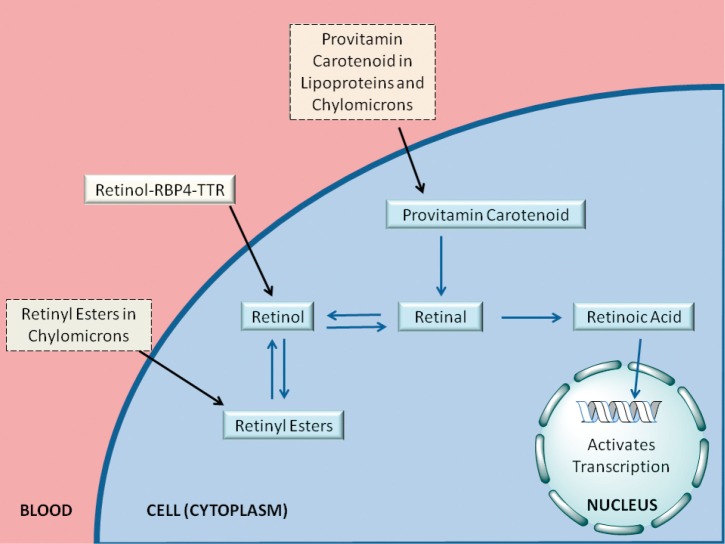Figure 3.
Overview of the classical understanding of retinoid delivery. Until recently, it was widely accepted that the primary mechanism of retinoid transport involved retinol circulating bound to RBP4. While other pathways had also been known at the time, such as retinoid transport as retinyl ester in chylomicrons and as provitamin A carotenoids, retinol-RBP4 was regarded as the sole important delivery pathway to tissues. As noted in the text, two recent experimental studies show that for mice totally lacking Stra6 no significant differences were detected for retinol or retinyl ester levels in adipose tissue, brain, heart, kidney, liver, lungs, muscle, pancreas, spleen, testis, or thymus, only those present in the eye (45,46). Another study concluded that STRA6 is not the only pathway for retinol uptake into the eye (47). Collectively, this raises a question as to how physiologically important STRA6 may be for mediating tissue uptake and accumulation of retinoid, especially outside of the eye (46). Consequently, we have not drawn in STRA6 into this overview, although earlier publications have argued in favor of STRA6 inclusion (48-50).

